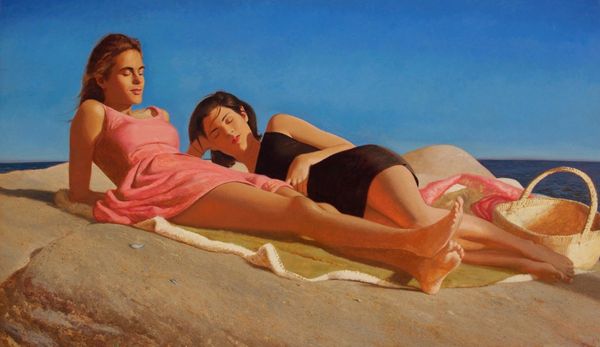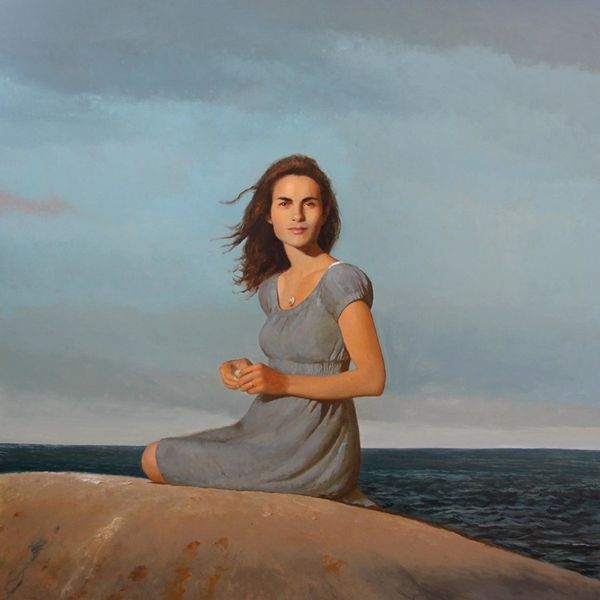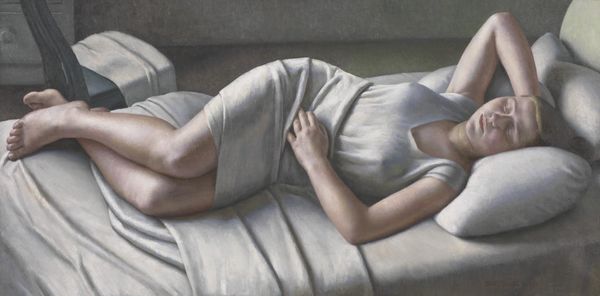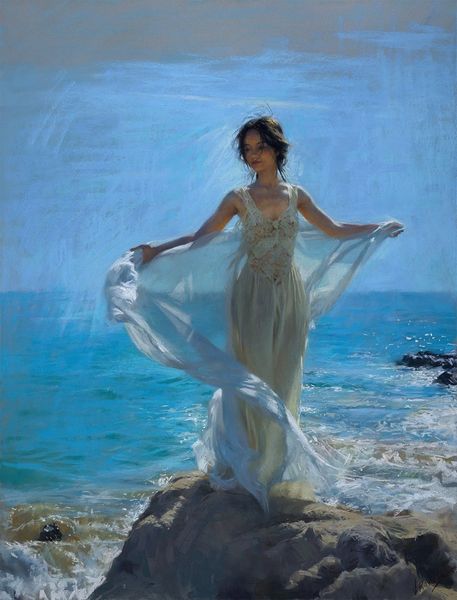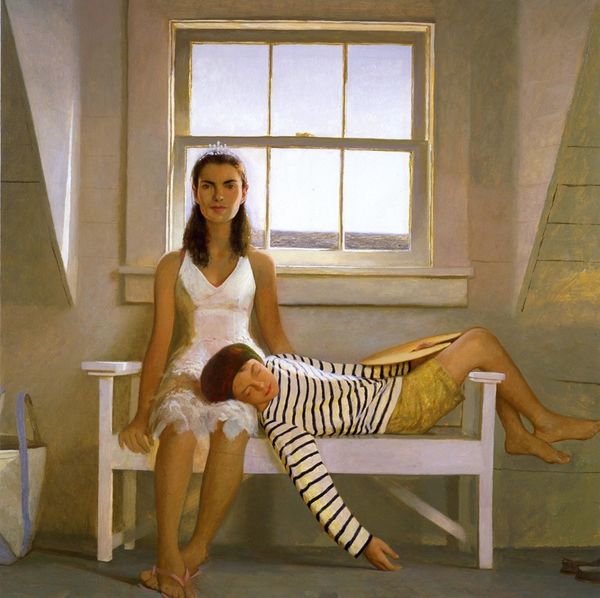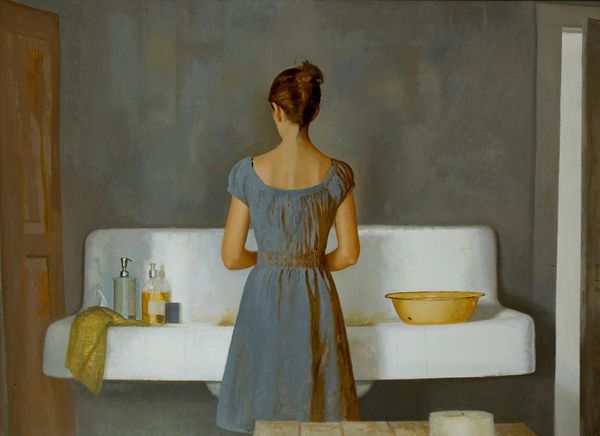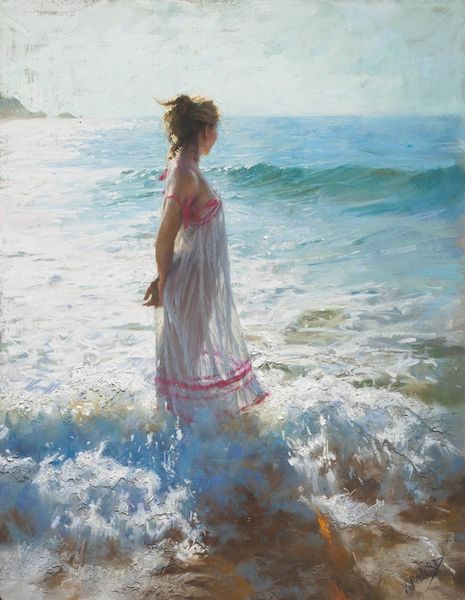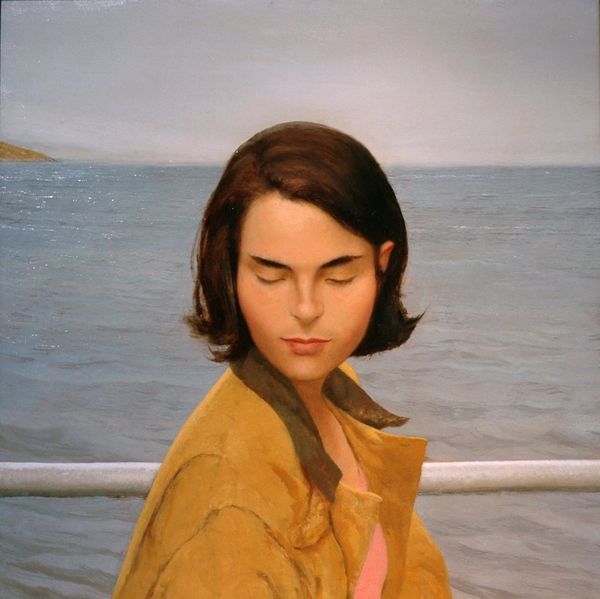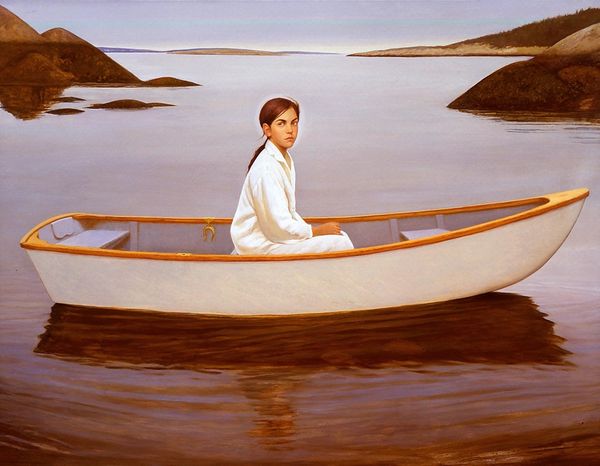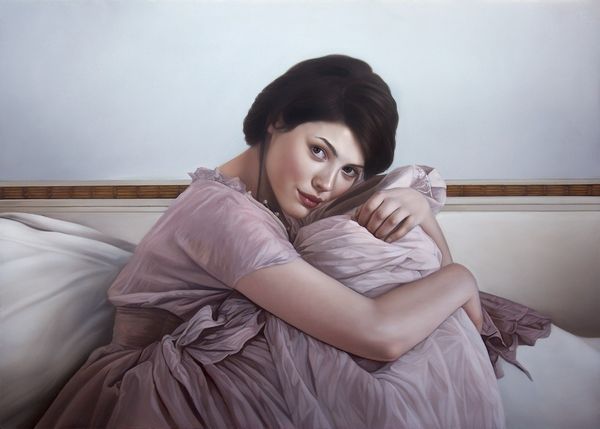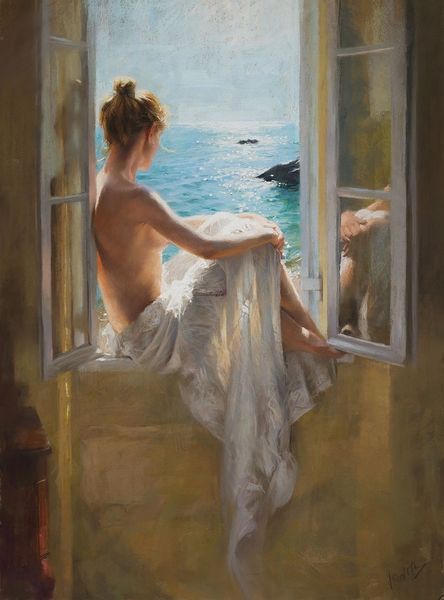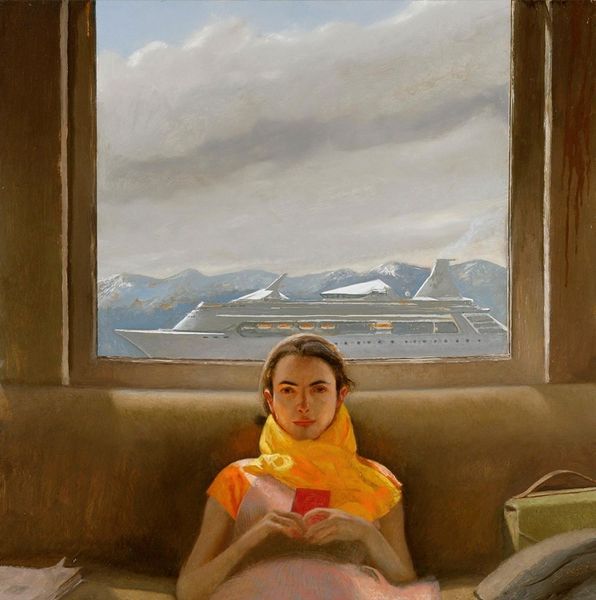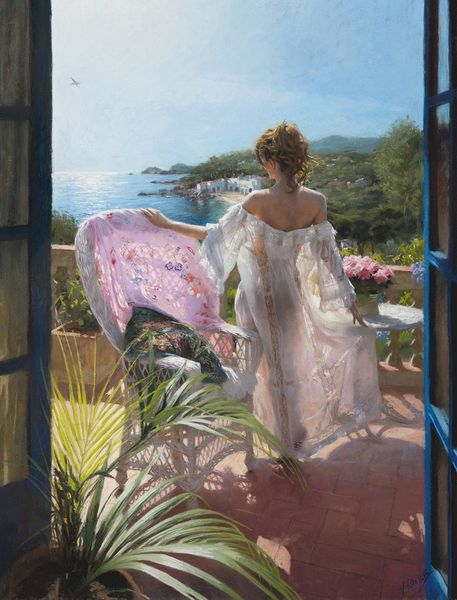
painting, plein-air
#
painting
#
plein-air
#
furniture
#
landscape
#
sitting
#
portrait art
#
modernism
#
fine art portrait
#
realism
Copyright: David Ligare,Fair Use
Editor: David Ligare painted "Penelope" in 1980. The figure sits calmly, gazing out at the sea. I’m immediately struck by the sense of stillness in this piece. What symbolic readings can you offer? Curator: Ligare evokes cultural memory through his distinct style and careful use of symbols. This Penelope immediately references Homer’s *Odyssey*. Ligare freezes Penelope at the moment of contemplation and waiting. Notice how her gaze, directed just to the left, suggests expectation. Ligare paints Penelope as an archetype, transcending a simple portrait to explore themes of fidelity, patience, and hope, virtues particularly valuable during uncertain times. Do you notice how the geometric tiles emphasize this order? Editor: Yes, they’re almost like a visual representation of time and order. The repetition of the square also frames the natural chaos behind her–the ocean–within the same structure. And, to continue to bring in the feminine perspective, perhaps this is also representative of the weaving of Penelope to outsmart her suitors as she awaited the return of Ulysses. Is that credible here? Curator: Absolutely. Think of weaving, also, as a metaphor for constructing narratives. Ligare positions Penelope not just as a passive figure awaiting a hero, but as an active participant in creating her own story. Also, remember Penelope was a model of domestic virtue; Ligare recasts that domestic scene by placing her outside. Consider the vast, open sea behind her, juxtaposed against the structured architecture surrounding her. This juxtaposition encourages a consideration of traditional gender roles and expectations. Editor: So, the landscape becomes a sort of mirror reflecting Penelope's inner state? Curator: Precisely. The endless horizon mirrors the boundlessness of her hope, while the ordered terrace reflects her resolve and inner strength. That single block that acts as her footrest appears almost deliberately placed to frame bare feet that suggest vulnerability. Ultimately, it's an interesting statement of control over interior and exterior selves, time, and history. Editor: Thank you. This has really enriched my understanding of the image.
Comments
No comments
Be the first to comment and join the conversation on the ultimate creative platform.
